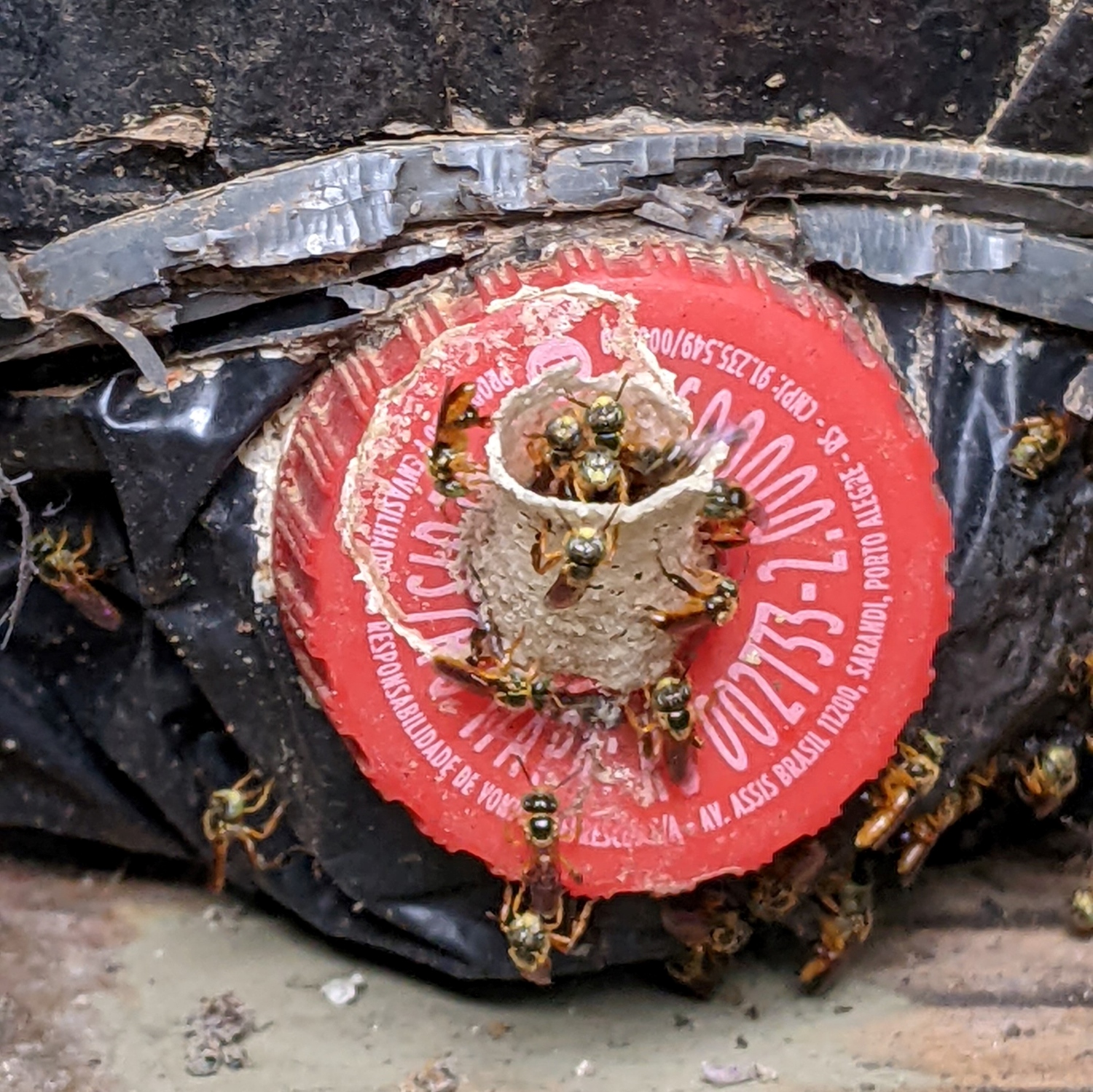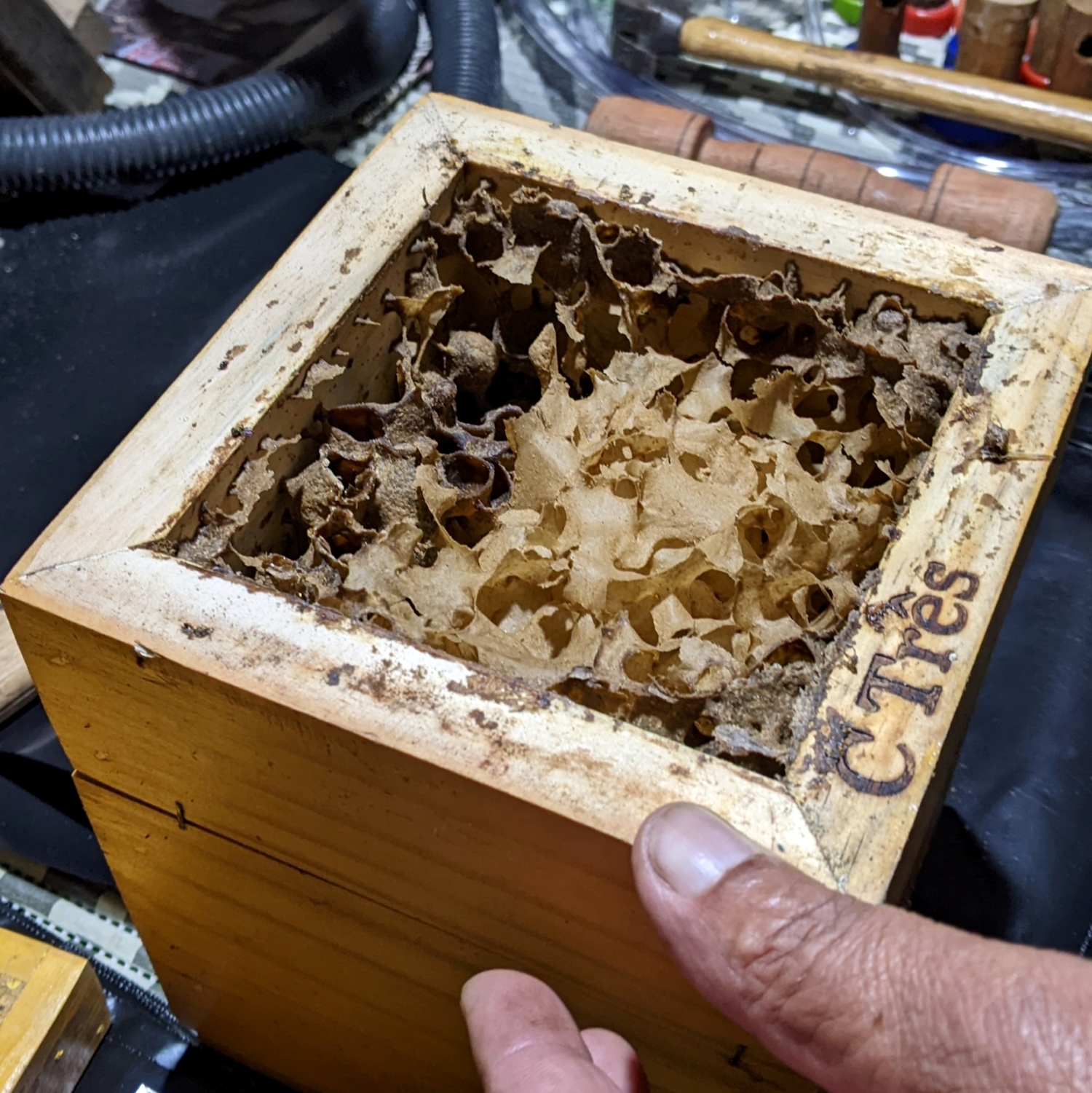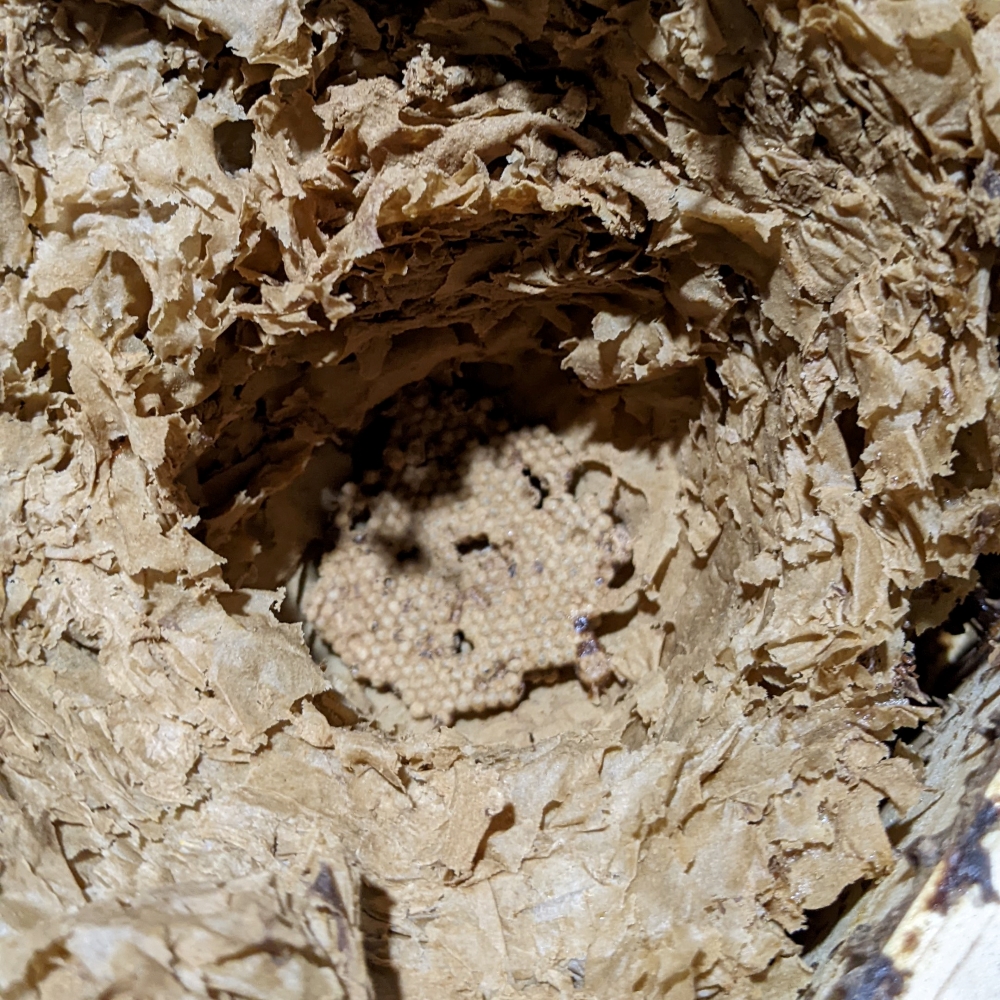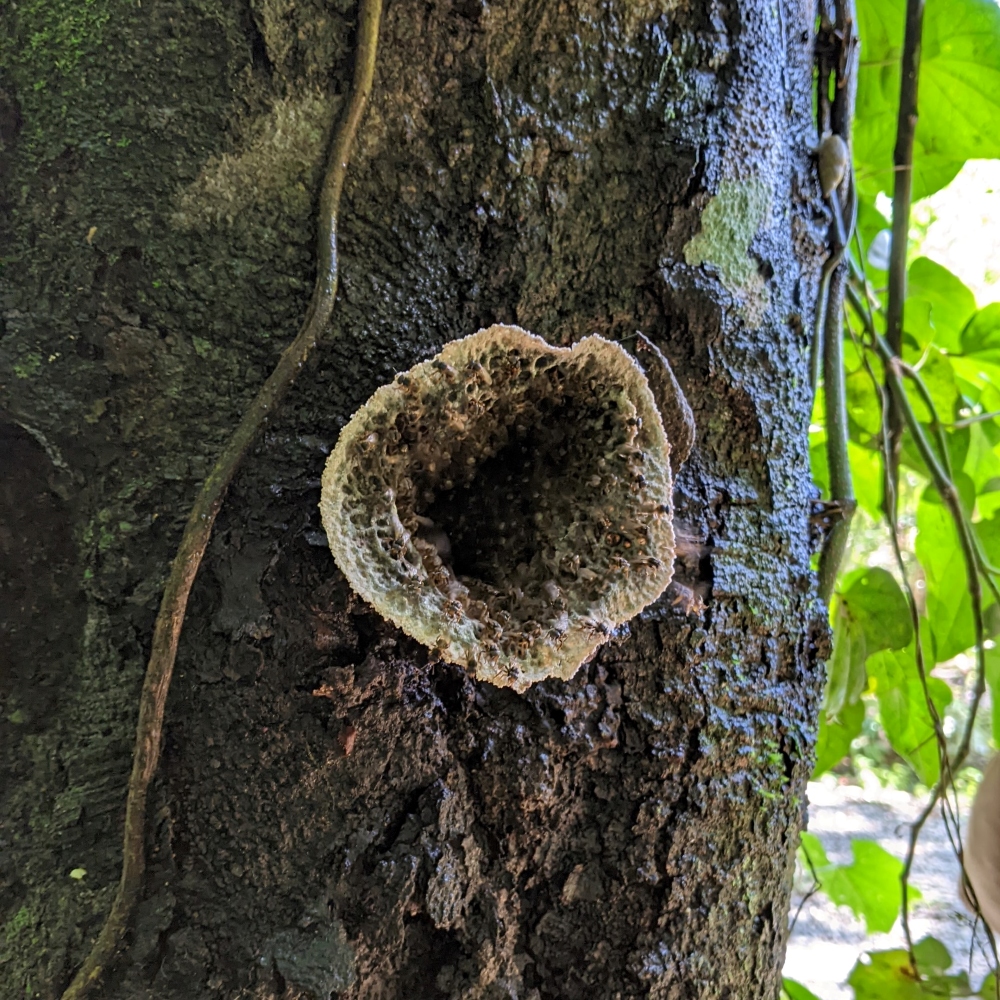Deep Field Outreach
It was rainy and dark by the time we arrived at our destination deep in the Atlantic Forest of São Paulo state, Brazil. Most of the road from Campinas, where we work as visiting faculty (Lev) and associate professor (Roberto) at the University of Campinas (UNICAMP), had been well-paved … and overbuilt with speed bumps for speed control. But nearing sunset, we turned off the main road between Parque Estadual Carlos Botelho and the town of Sete Barras and it was rougher and slower going on unpaved roads. An hour later we arrived at our host Gilberto’s property and set up our tents in the barn to keep dry from, well, the rain forest.
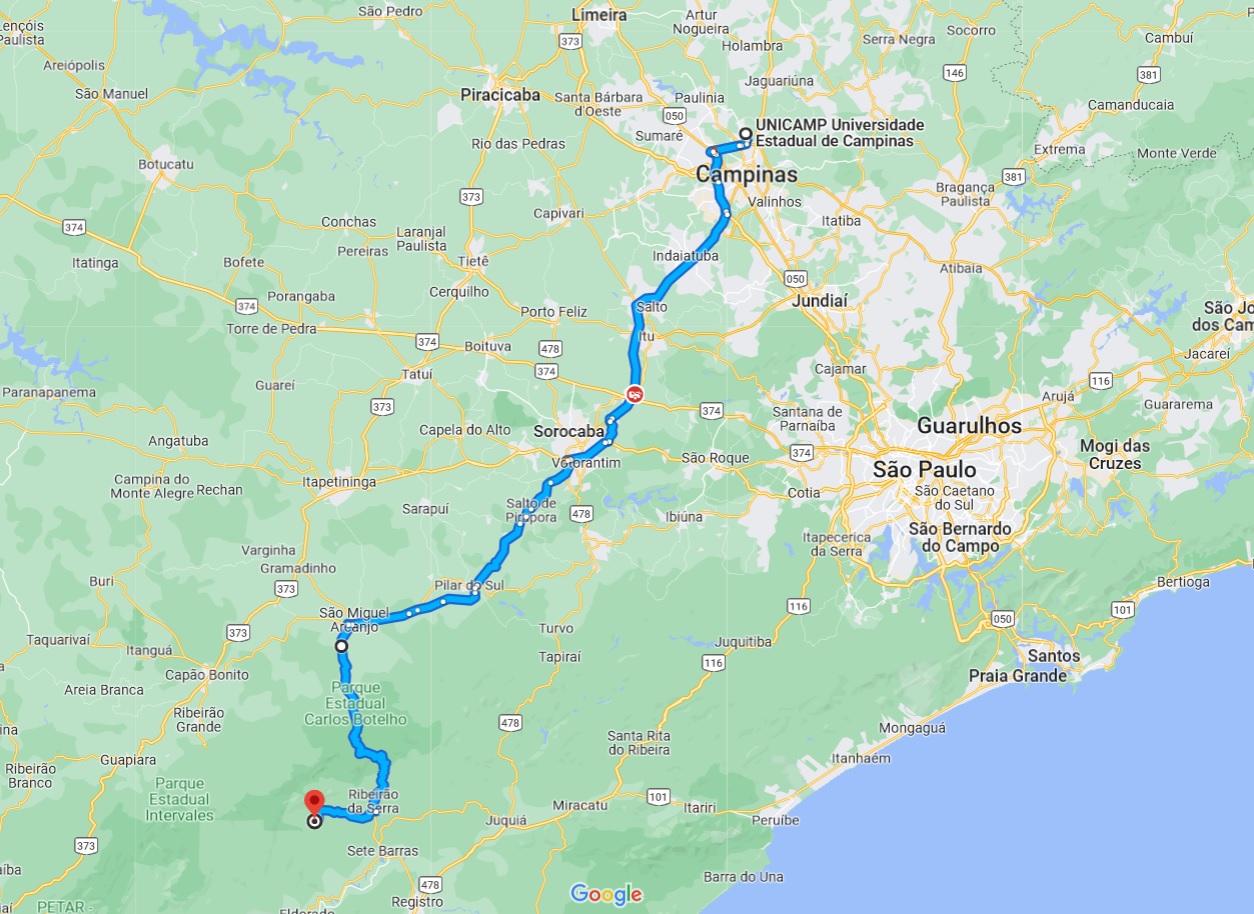
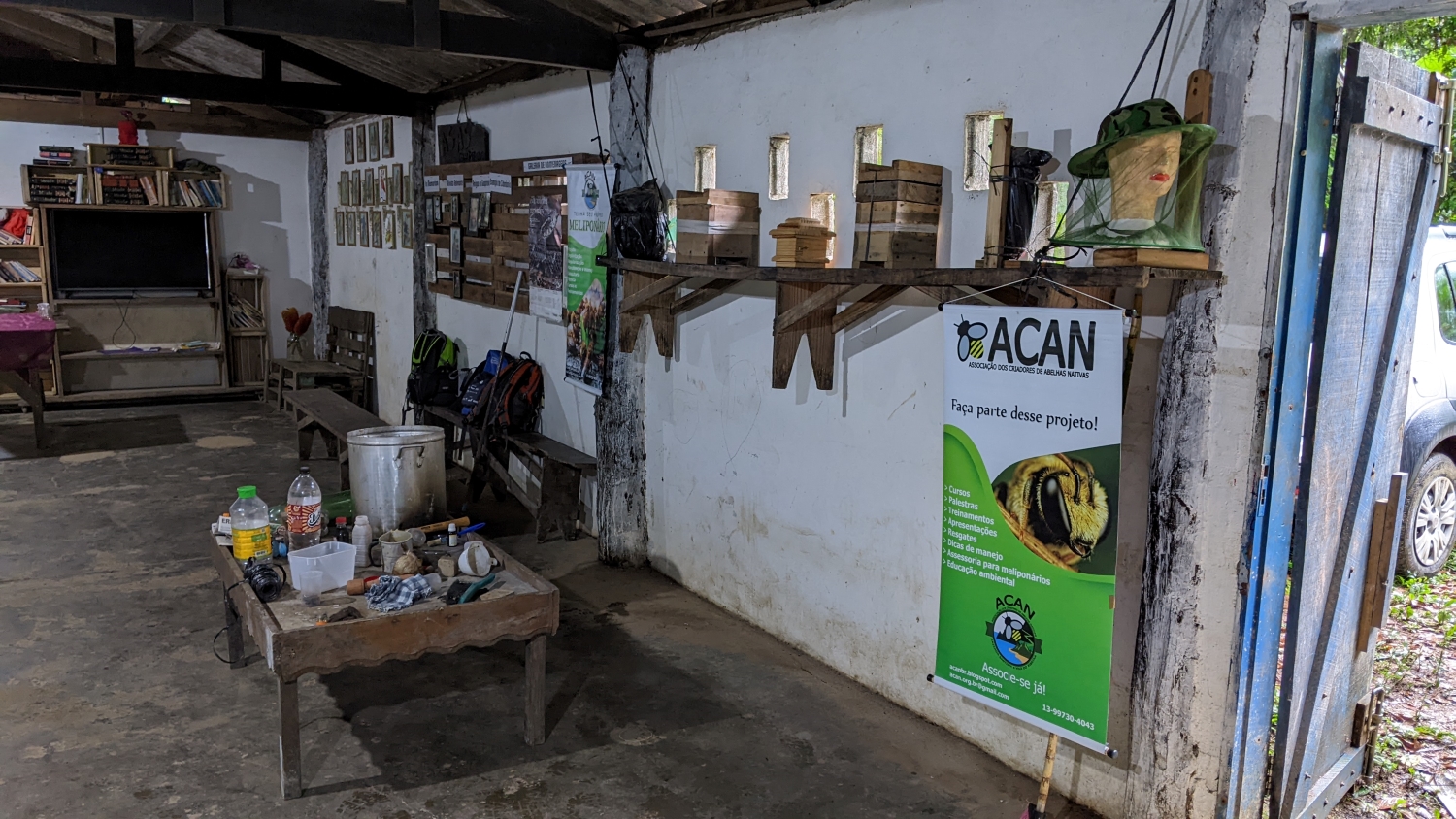
Set up for the beekeeping event at the Guapiruvu community center. With no shelving, we used a bench hung from the ceiling to display the five beehives (wooden boxes facing out the windows so the bees can forage)
Guapiruvu is a community settled long ago on land of ambiguous ownership in the Vale do Ribeira region, where you can find the best-preserved stretch of the Atlantic Forest. Near the Guapiruvu community, much of the surrounding land contains monocrops of banana whose production needs to be maintained with pesticides. However, some members of the community seek to do something different: agroforestry. The members maintain a forest ecosystem from which they harvest banana, pupunha (a type of palm cultivated for its tasty central core), and juçara (another type of palm that creates seeds much like the açaí palm). The community is part of a local cooperative, Cooperagua, which distributes cultivated products from agroforestry activities to larger cooperatives such as Coopafasb, and eventually Cooperativa Central, which distribute the produce around São Paulo state.
We were here to conduct educational outreach activities, but first it’s important to understand the educational context of the area. Guapiruvu features a single kindergarten in the community, which is right behind the community center where we were conducting our work. There used to be a primary school, but it was closed and now in order to attend school, students need to take a one-hour school bus ride down the unpaved road to exit the community and go to one of the two schools in and around Sete Barras. For secondary school, many students simply stay in Sete Barras and come home only on the weekends. Very few go to college afterwards, with many starting work in Guapiruvu or other big cities after secondary school. If their families have land, they’ll work on that land, otherwise, they’ll become workers on other properties.
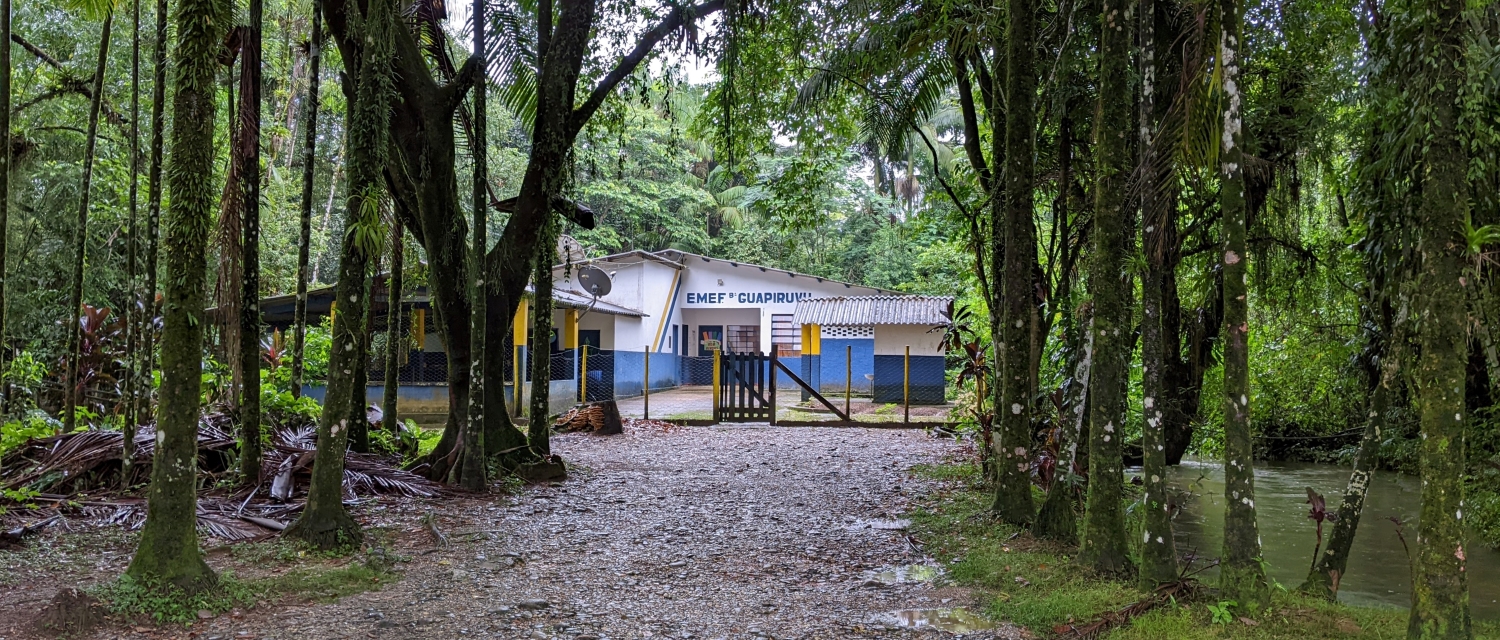
The Guapiruvu kindergarten (community center is over a small rickety bridge to the left)
The work in Guapiruvu for ten days was extension education. As part of an internal UNICAMP grant, Roberto developed a program that focused on outreach activities that brought regional experts (in this case Sr. Jorge de Oliveira Diogo) to present and talk about agriculture-related topics to the Guapiruvu community. The topic on this visit was native bees. Native Brazilian bees are starting to become popular in agriculture and sometimes as pets because they form self-sustaining colonies but are completely stingless (although some of the more aggressive species do bite a little). Their nests, which can be made in trees and walls, feature egg disks (which are the only hexagonal feature in a hive), with honey and pollen stored in little irregular wax pots around the egg disks. They’ll often build exotic, and unique for each species, tube and funnel structures leading into their nest, which help with identification in the field. Native bees, restricted to the tropics, are an important component of local agriculture, but often are poorly understood by the general public and underutilized in agriculture where they can be of great benefit. In the Guapiruvu region, they are especially important for pollinating the juçara palm, which historically has been targeted for logging and so reestablishing its diminishing presence in this part of the Atlantic Forest is particularly important.
(1) Jataí bees building a tube to their nest, which is housed temporarily in an old soda bottle, (2) An abandoned nest showing the mud-and-wax pot structure where pollen and honey is stored, which is very different from the structure of a European beehive, (3) The egg disc at the bottom of the hive, the only hexagonal arrangement in the nest, (4) The funnel entrance to a nest in a tree trunk out in the field (these bees were quite aggressive and liked to bite, but like all native bees, are stingless)
The key to this whole endeavor is Gilberto, the community leader. Guapiruvu is special in having a community leader who is invested in the continuing education of the people of the community, something that is not commonly seen in other settlements in this region. Gilberto was especially proactive in establishing the collaboration that would lead to the work we would be doing on this trip. The educational activities took place in the community center, a building overgrown with moss and situated near the kindergarten near major crossroads within the community. The extension events took place on two consecutive weekends, and we spent the week in-between exploring the region and learning more about its people and history.
Lev’s Observations
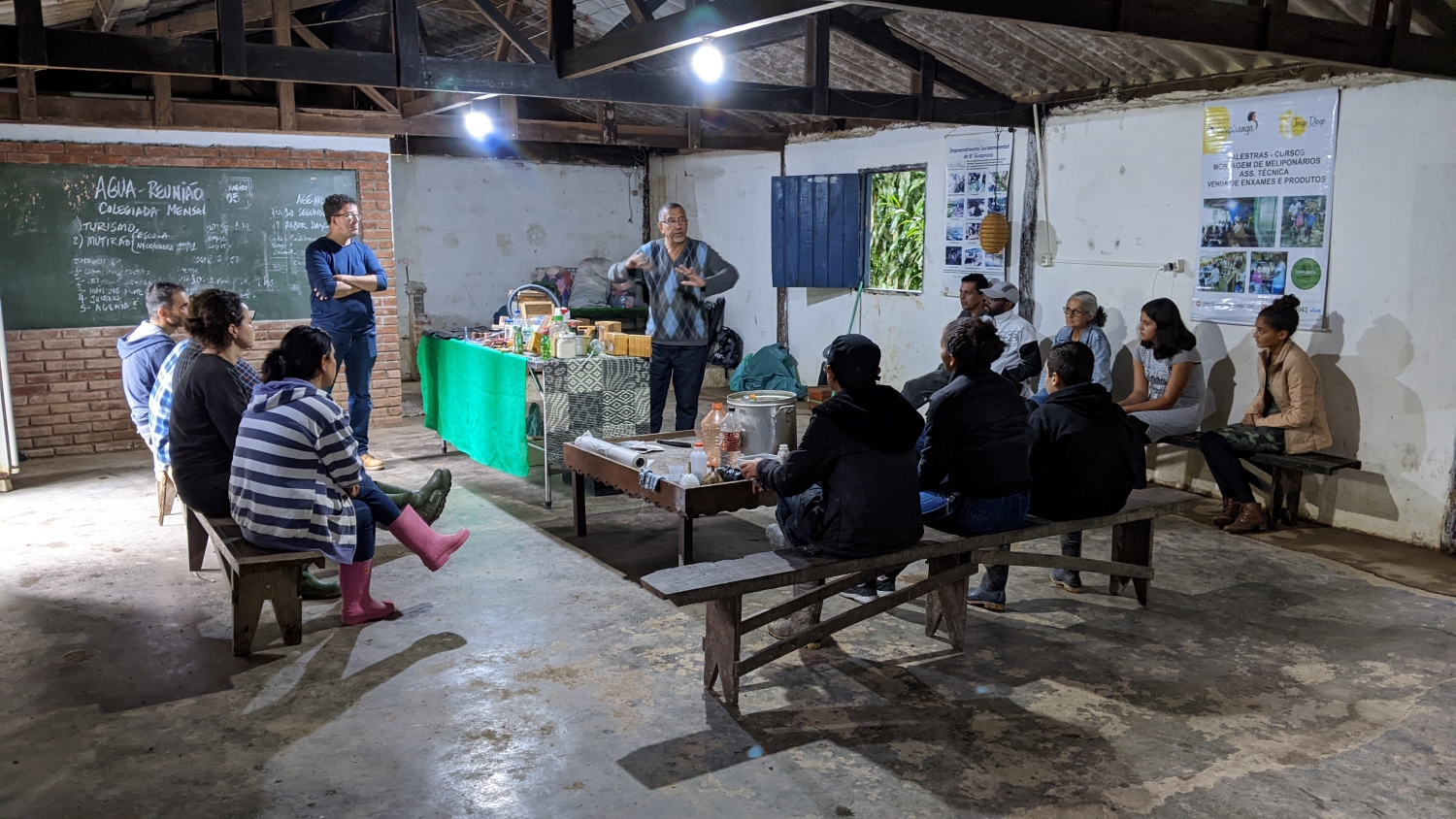
Sr. Jorge de Oliveira Diogo introduces native bees to the members of the Guapiruvu community on a rainy Saturday morning
My primary purpose was as an observer. I had arrived in Brazil about a month prior and was still getting used to the bureaucracy, language, food, and pace of life. An invitation to tag along and observe an education project in a remote region was, of course, a no-brainer. The community center was relatively sparse, with space for gathering, a few benches and tables, some bathrooms, and a kitchen. There were posters from previous events hung around the space, with QR codes for more information. Despite the whole region having no or very little cellphone coverage, the QR codes worked because the community center has wifi. In the corner were a few books and a TV for presentations.
The event started when enough people gathered to make it worthwhile, which was about midmorning despite a purported 8 AM starting time. It began with relatively long lectures about bees. I didn’t understand most of it, but had learned enough Portuguese to understand what was written in the guidebooks that were distributed to the attendees. The inability to understand what was being said allowed me to spend more time observing the event and the audience. The attendees were a mixture of all ages. Most people stayed for the whole event, with ebb and flow depending on who lost interest and who decided to drop by later. The lecture portion was a bit difficult since it lasted several hours with the attendees sitting on uncomfortable wooden benches on a rainy Saturday morning. I noticed that a lot of kids lost interest and retreated from the activities to use the wifi on their smartphones, as this was one of the few places in the community that had internet access. Things picked up after the midday meal, which was prepared and served out of the kitchen at the community center. The afternoon was filled with practical work. This was a lot more engaging for everyone, as it involved activities that kept everyone’s hands busy while building new hive homes for the bees and figuring out where to place them around the community center and school.
The second weekend expanded on the practical activities, but featured a different audience split between kids and older adults, as the younger adults were in the fields working on the harvest. During this weekend, there was less lecture and a lot more engagement since there were activities that included working with beeswax, building a meliponário (a structure for housing native beehives), and moving a couple of mature colonies of jataí bees from their temporary bottle homes to a more permanent structure.
Roberto’s Observations
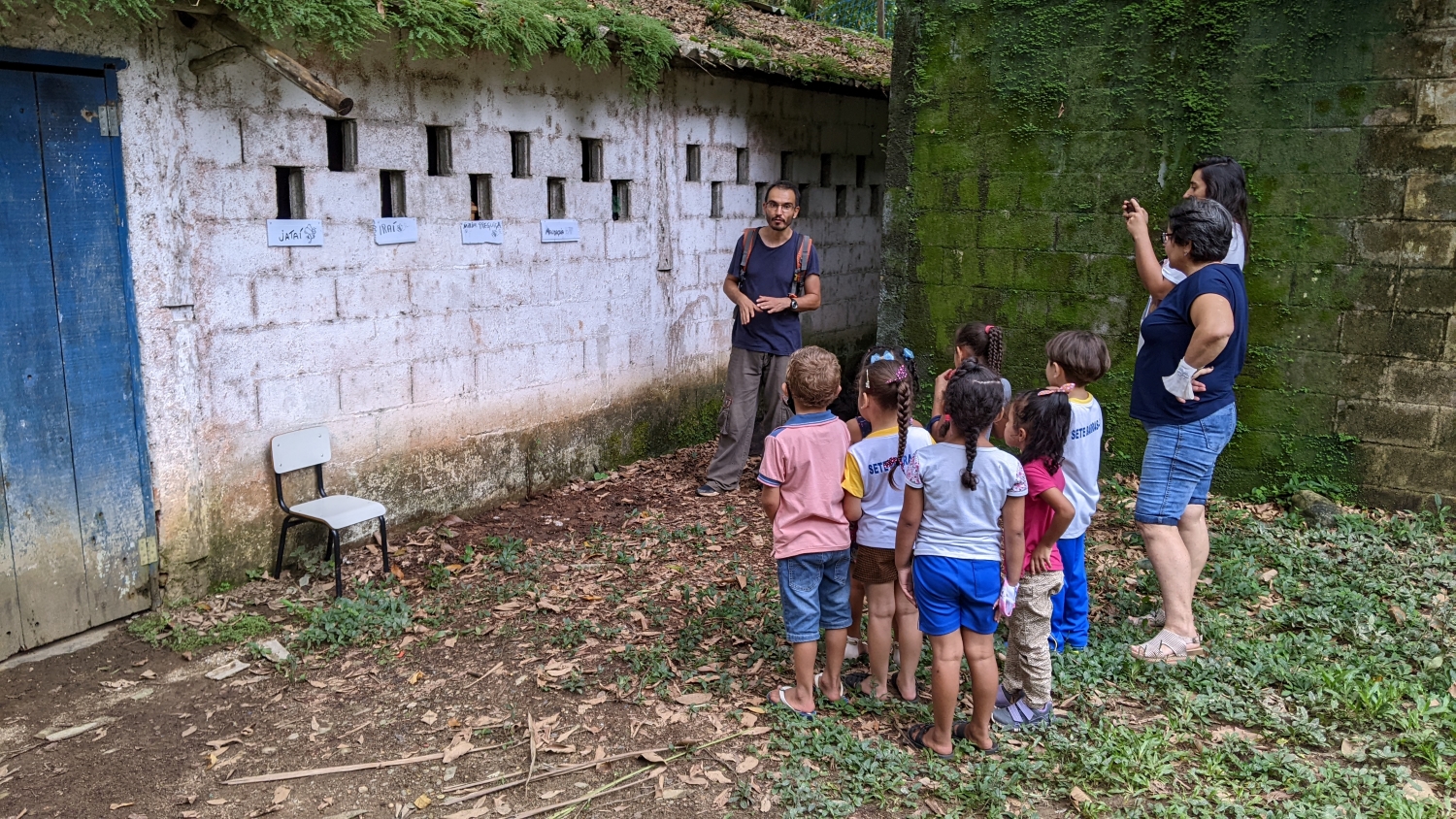
Roberto introducing the various species of native bees to the kids at the local kindergarten
Guapiruvu is a special community because it is really involved with both nature and humans. While there is an interest in financial sustainability, it doesn’t come at the cost of nature. The area already receives a lot of researchers due to its location in the Atlantic Forest, which allowed Gilberto to form quick connections to bring extension activities to the community. Researchers could have done the activities on their own, but because it was requested by the leadership of the community, there is wider engagement, especially from the young people. As a result of the bee activity, as well as subsequent ones I completed later in the year, we’re able to see a change in attitude in how people of the community interact with nature. For example, whereas before people would kill a snake found on a farm, now they collect them and transport them to the national park for release. In another example, educational activities around the juçara plant have resulted in a self-organized cooperative of young people who collect juçara fruits for juice and sell seed to the government for reforestation.
The most interesting result has been the collective knowledge gains that I’ve observed in the community. Participation in the extension events by community members can vary from event to event and from hour to hour during the event. I’m always very surprised that when I return months after an event and conduct low-level assessments of knowledge, such as asking trivia questions to children in a friendly competition, that they recall far more than you would expect. Even though not every child can answer every question, collectively they can recall most of what we show them. It turns out that most of the information we show them during these extension activities is retained by the community collectively and they work together to maintain that knowledge. Even if someone doesn’t have the individual knowledge, they can recover it from other members of the community. This is especially important for free events on weekends and during times when some members of the community are working, where attendance can vary.
Notes for Practice
Deep Field Outreach
Alternate theoretical and practical. Although it should go without saying that lengthy lectures are not a great format for public outreach activities, we often default to this approach because it’s information dense. Sometimes, less is more. Reduce the amount of information you convey at one time and distribute it throughout activities that are more engaging.
Think communally. We often treat our outreach events as disappointing if our attendees don’t remember everything that we expose them to. But we could be having an important community effect that we don’t recognize because we’re too focused on individual learners. Ensure you distribute community learning resources that can serve as a permanent reference at a local community center, library, or school.

